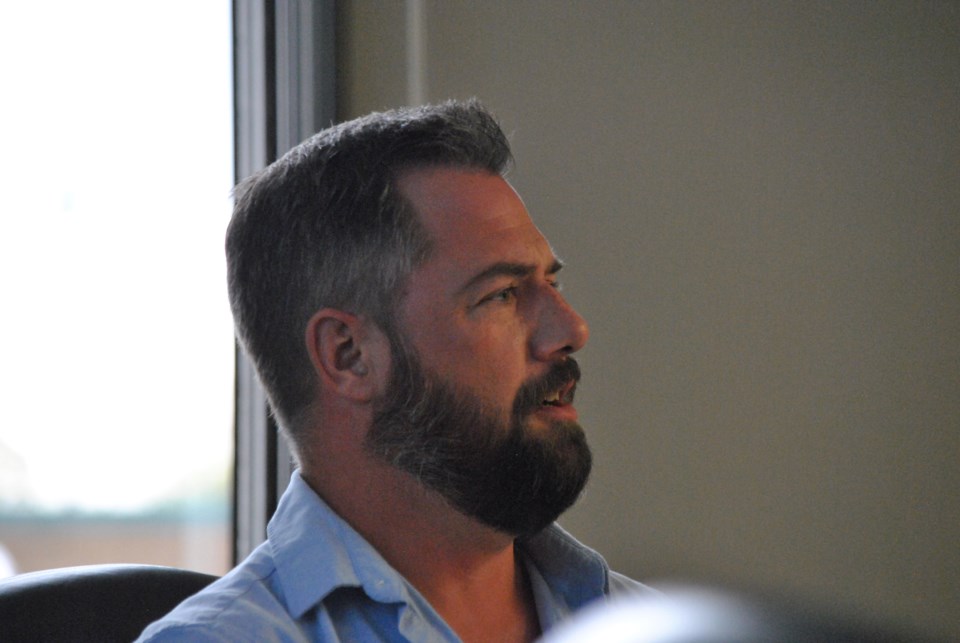BARRHEAD-It is official, the County of Barrhead has declared a state of agricultural disaster.
Councillors unanimously voted to approve the Agricultural Service Board's (ASB) recommendation during their Sept. 21 meeting.
In the Town and Country This Week's coverage area, both Athabasca County and Westlock County have declared states of agricultural disaster, as has Woodlands County and Lac Ste. Anne County.
To date, 39 out of the 69 Alberta rural municipalities have declared a state of agricultural disaster, with more expected to follow.
County fieldman Kyle Meunier said this is the sixth time the county has declared a state of agricultural disaster in the last seven years.
"In 2015, it was a drought. In 2016, 2017, 2019 and 2020, it was because it was wet with flooding and this year, it is drought again," he said.
A declaration of a state of agricultural disaster does not necessarily qualify farmers for funding.
"That is not how it works. It is more of an awareness program for the public and the provincial government to draw attention to farmers' plight," he said, adding by doing so, the hope is that the provincial and provincial governments offer impacted farmers and agricultural producers some sort of assistance.
In August, the province provided $136 million in relief to livestock producers and beekeepers and requested an additional $204 million in support from the federal government through the AgriRecovery disaster relief program. Cattle producers can apply for $200 per head through the 2021 Canada-Alberta Livestock Feed Assistance Initiative. The initiative is designed to help producers with `out-of-the-ordinary costs as livestock producers deal with reduced grazing caused by prolonged dry weather and extreme high temperatures.
The process is quite regimented, Meunier said, and it is not as simple as an ASB or a council deciding to make the declaration. To help aid municipalities, Rural Municipalities of Alberta (RMA) have created a guide to work through.
"Crops were hit and miss. Depending on where you were in the county, so it is hard to declare a disaster on that," Meunier said.
However, he said, hayland and pastures were "considerably down."
"If you got a second cut, good for you. You were one of the lucky few," he said.
Because of the poor hay crop, Meunier said, what is available is going for considerably higher prices than most farmers had anticipated or budgeted for.
"I have seen prices going as high as $180 for a round bale of hay, depending on its quality," he said. "The average seems to be about $150, but as people get more desperate, the market will go higher."
Unfortunately, Coun. Walter Preugschas said producers do not have any good options because the alternatives, such as barley, are also expensive.
According to Agriculture Financial Services Corporation (AFSC) Aug. 31 regional pasture report, with in the Northwest Zone, which includes Barrhead, 46 per cent of the pastures are rated poor, 43 per cent are rated fair, and only 11 per cent are considered good.
"And nothing is rated excellent, which if you take a tour of the county, you will see it seems accurate," Meunier said, adding it is not surprising as the zone was one of the driest in the province.
He also noted it just wasn't the lack of precipitation but the prolonged, extreme temperatures that caused the problem, saying that about 90 per cent of agricultural land was impacted in some way, but reiterated that hay and pasture land were impacted the most.
Meunier said many farmers believed they would have a good year because of the moisture reserves in the soil from the previous year.
"Germination came fast coming only a week or two after crops were planted," he said. "Then it got hot, and they did not continue to grow as they were supposed to."
Preugschas said the ASB suggested that producers whose hay and pasture lands were not as impacted as much should help those in more dire straits.
Reeve Doug Drozd agreed, saying he has already seen examples of farmers, through social media, making canola straw available.
"You normally would chop it and blow it back onto the fields," he said.
County manager Debbie Oyarzun interjected that she has also seen producers cut hay from what would have been slews.
Coun. Dennis Nanninga was concerned that they emphasized that the weather did not affect all crops or areas equally, saying he did not want to be accused of "crying wolf."
"In the area that I represent [Division 7, Neerlandia/Vega] it does not feel right to say that we have a problem, but overall I certainly support [making the declaration]. I just want to make sure the documentation is credible and show that," he said.
Barry Kerton, TownandCountryToday.com



